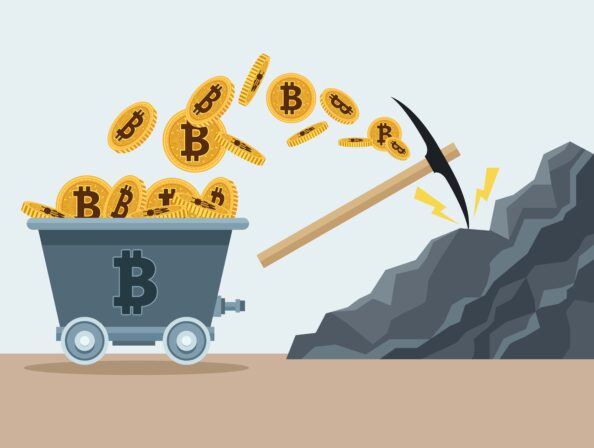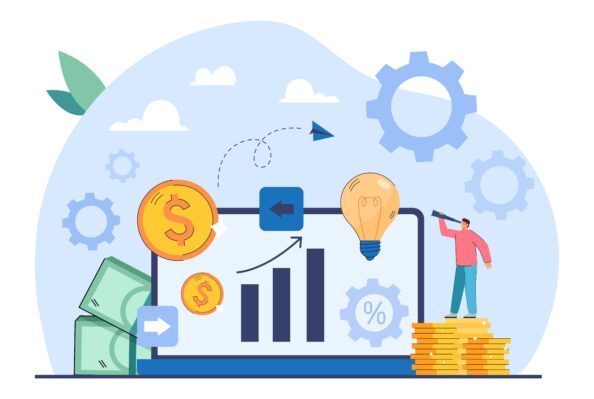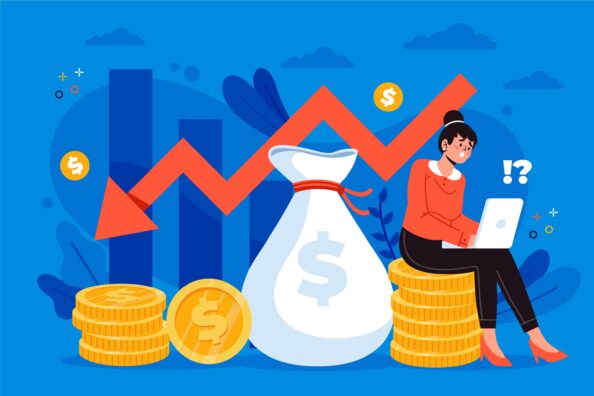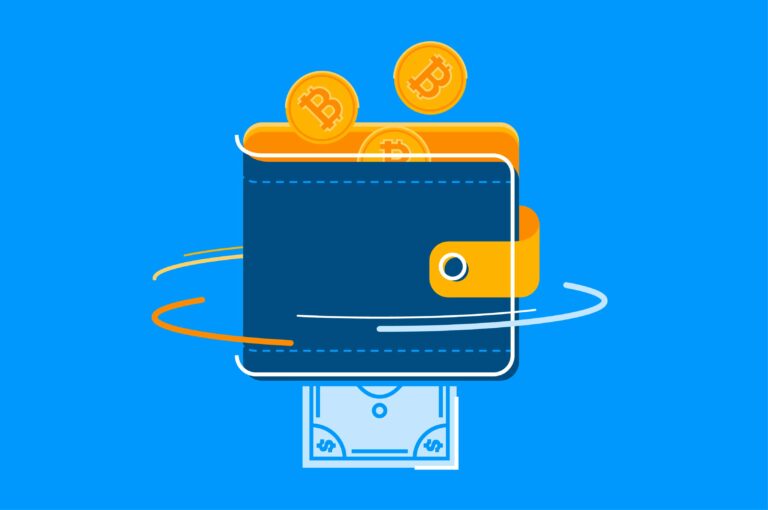
Decentralized Finance (DeFi) is a financial system that operates on blockchain technology and allows users to access financial services without intermediaries like banks. It provides an alternative to traditional finance, allowing users to lend, borrow, and trade cryptocurrencies with each other.
One of the most popular aspects of DeFi is liquidity mining. It is a process of earning rewards by providing liquidity to a decentralized exchange. Liquidity mining incentivizes users to supply assets to a DeFi protocol’s liquidity pool, which helps to facilitate trading and exchange transactions. In return, users are rewarded with newly minted tokens or transaction fees.
Liquidity mining has become a popular way for users to earn passive income in the crypto space. It also provides liquidity to decentralized exchanges, making them more attractive to traders and investors. As a result, liquidity mining has played a significant role in the growth of DeFi, and many DeFi protocols now offer this feature to their users.
In essence, liquidity mining is a way for market makers to earn rewards for providing liquidity to a trading pair. Market makers are participants in the crypto market who provide liquidity by placing buy and sell orders on the market. When traders place orders on the market, they are matched with other traders who are looking to make the same trade. The market maker’s role is to ensure that these trades get executed quickly and efficiently.
In order to incentivize market makers to provide liquidity, exchanges offer them rewards in the form of tokens. These tokens are often referred to as LP tokens and are used to represent the market makers’ share of the liquidity pool. The rewards are paid out in a variety of ways, depending on the exchange, but typically consist of a percentage of the trading fees generated from the trades that the market maker has enabled.
The process works by allowing users to add their digital assets to a liquidity pool, which is then used to facilitate transactions on the platform.
In return for providing liquidity, users are given newly minted tokens or a portion of the transaction fees generated by the platform. The rewards are distributed proportionally to the amount of liquidity provided, and the longer the liquidity is held, the higher the rewards can be.
Users can earn rewards simply by providing liquidity to a protocol, without having to actively trade or engage in any other activities. This can be an attractive option for those who want to earn a steady stream of income without putting in a lot of effort.
Some protocols list the names or addresses of liquidity providers on the platform, allowing other users to see who is contributing to the liquidity pool. This can provide a sense of community and encourage more users to participate in liquidity mining.
In terms of risk, liquidity mining is generally considered to be low risk. The rewards are often fixed and predictable, and the liquidity provider can withdraw their funds at any time.
The value of the digital assets held in the liquidity pool can fluctuate, which can impact the value of the rewards earned. Additionally, there is always the risk of smart contract vulnerabilities and hacks, which can result in the loss of funds.
Users must have sufficient capital to invest in the liquidity pool, and they must be willing to lock up their assets for a certain period of time. The longer the liquidity is held, the higher the rewards can be, but this also means that the user’s assets are illiquid during that time.

One of the primary benefits of liquidity mining is that it allows users to earn rewards simply by providing liquidity to a decentralized exchange or lending platform. This can be an attractive option for those who want to earn a steady stream of income without having to actively trade or engage in other activities.
In addition to earning rewards, liquidity mining can also provide users with exposure to new DeFi protocols and projects. By participating in liquidity mining, users can support and contribute to the growth of new protocols, and can even be rewarded with early access to new products and services.
Liquidity mining can also help to improve the overall liquidity and trading volumes of decentralized exchanges, making them more attractive to traders and investors. This can contribute to a more vibrant and dynamic DeFi ecosystem, with greater participation and adoption of decentralized finance solutions.
Centralized exchanges (CEX) and decentralized exchanges (DEX) are two types of platforms that allow users to buy, sell, and trade cryptocurrencies.
CEXs are operated by a central authority, which manages the platform and executes trades on behalf of users. These exchanges are typically more user-friendly and have higher trading volumes than DEXs. However, they also come with a higher level of centralization, which can lead to concerns around security and transparency.
On the other hand, DEXs are operated on a decentralized network of nodes, which allows for peer-to-peer trading without the need for a central authority. This means that users have greater control over their funds and can trade without relying on a third-party intermediary. However, DEXs can be more complex to use, have lower trading volumes, and are often subject to issues around liquidity.
In general, CEXs are more suitable for beginners and casual traders who value ease of use and high trading volumes, while DEXs are better suited for advanced traders who value decentralization, privacy, and control over their funds. Ultimately, the choice between a CEX and DEX depends on the individual’s preferences and risk tolerance.

Liquidity mining and staking are two popular methods for users to earn rewards in the DeFi space.
Liquidity mining involves providing liquidity to a decentralized exchange or lending platform, in exchange for rewards in the form of additional tokens or fees. The rewards earned through liquidity mining can be substantial, but they are also subject to market volatility and may require the user to lock up their funds for a period of time.
Staking, on the other hand, involves holding a certain amount of a specific cryptocurrency in a wallet, in order to support the operation of a blockchain network. Users who stake their tokens can earn rewards in the form of additional tokens, transaction fees, or governance rights. Staking typically involves less risk than liquidity mining, as users can earn rewards without exposing themselves to market volatility.
In general, liquidity mining is more suitable for users who want to earn high rewards but are willing to take on higher risk and lock up their funds for a period of time. Staking is more suitable for users who want to earn rewards in a more stable and predictable manner, without exposing themselves to significant risk. Ultimately, the choice between liquidity mining and staking depends on the individual’s risk tolerance, investment goals, and preferences.
Liquidity mining and yield farming are two popular ways to earn rewards in the DeFi space.
Yield farming involves using complex strategies to earn rewards by moving funds between different DeFi protocols. Yield farmers may use techniques such as arbitrage, lending, and leverage to maximize their returns. Yield farming can be highly lucrative, but it is also highly complex and can involve significant risks.
In general, liquidity mining is more suitable for users who want to earn rewards through a simpler and more straightforward process, without having to engage in complex strategies. Yield farming is more suitable for advanced users who are comfortable with the risks and complexities involved in maximizing their returns through DeFi protocols.
Ultimately, the choice between liquidity mining and yield farming depends on the individual’s experience, risk tolerance, and investment goals.

While liquidity mining can be a lucrative way to earn rewards in the DeFi space, there are also significant risks involved. Some of the key risks associated with liquidity mining include:
Impermanent loss is a key risk associated with liquidity mining, where the value of the tokens being provided as liquidity fluctuates, leading to a loss in value. Here are some strategies that can be used to minimize impermanent loss in liquidity mining:
The key to minimizing impermanent loss in liquidity mining is to carefully evaluate the risk and reward of any opportunity before participating. By choosing stable pairs, regularly rebalancing your pool, diversifying your liquidity, and hedging your risk, you can help minimize the risk of impermanent loss and maximize your returns.
To start liquidity mining, you will need to follow some easy steps:

The tax treatment of liquidity mining can vary depending on the jurisdiction in which the activity is taking place. In general, liquidity mining is treated as a form of taxable income and may be subject to income tax, capital gains tax, or other taxes depending on the specific regulations and laws in the country.
In some jurisdictions, liquidity mining rewards may be subject to a flat rate tax, while in others, they may be subject to progressive tax rates based on the individual’s income level. Some countries may also have specific tax laws for cryptocurrency transactions, which can impact the tax treatment of liquidity mining.
For example, in the European Union, liquidity mining is generally subject to value-added tax (VAT) as it is considered a service. However, the specific tax rate may vary depending on the jurisdiction. In some cases, there may be exemptions or reduced tax rates for certain types of transactions or participants.
In Singapore, liquidity mining rewards are generally considered taxable income and subject to income tax at the individual’s marginal tax rate. However, if the liquidity mining activity is considered to be a trade or business, it may also be subject to goods and services tax (GST) or other taxes.
In countries like Australia and Canada, liquidity mining rewards are generally treated as taxable income and subject to income tax at the individual’s marginal tax rate. However, in Australia, there may be exemptions or deductions available for certain types of cryptocurrency transactions, while in Canada, gains or losses from the sale or exchange of cryptocurrency are subject to capital gains tax.
It is important for investors to understand the specific tax laws and regulations in their jurisdiction and consult with a tax professional or financial advisor to ensure compliance with applicable tax laws. Failure to properly report liquidity mining rewards or pay taxes can result in penalties, fines, or other legal and financial consequences.

There are several types of liquidity mining protocols, each with its own unique characteristics and benefits. Some of the most common types of liquidity mining protocols include:
Each liquidity mining protocol has its own benefits and risks, and it’s important to carefully consider their investment goals and risk tolerance before choosing a protocol to participate in. Additionally, investors should carefully research the protocol they are interested in to ensure that it is secure and well-established in the market.

Balancer is a decentralized exchange and liquidity protocol that allows users to create customizable pools with up to 8 assets, each with their own desired weightings. Balancer uses a market maker algorithm that dynamically adjusts prices to maintain the desired asset ratios. Users can earn rewards by providing liquidity to a Balancer pool. The Balancer protocol also supports token swaps and allows users to trade between different ERC-20 tokens.

Uniswap is an automated market maker (AMM) protocol that uses a simple pricing algorithm based on the ratio of the asset reserves in a pool. Users can swap between ERC-20 tokens or provide liquidity to a pool and earn rewards in the form of trading fees. Uniswap is one of the most popular DEXs in the cryptocurrency ecosystem and has played a significant role in the growth of decentralized finance (DeFi).

PancakeSwap is a decentralized exchange (DEX) built on the Binance Smart Chain that operates similarly to Uniswap. PancakeSwap uses an AMM model and allows users to swap between BEP-20 tokens or provide liquidity to a pool and earn rewards in the form of trading fees. PancakeSwap has become increasingly popular among DeFi users due to its low transaction fees and fast transaction speeds.

Sushiswap is a decentralized exchange that forked from Uniswap in 2020. It operates similarly to Uniswap and allows users to swap between ERC-20 tokens or provide liquidity to a pool and earn rewards in the form of trading fees. Sushiswap offers additional features such as yield farming, where users can earn additional rewards by staking their SUSHI tokens.

Curve.fi is a liquidity protocol designed for stablecoins that allows users to swap between different stablecoins or provide liquidity to a pool and earn rewards in the form of trading fees. Curve.fi uses a unique algorithm that focuses on minimizing slippage for stablecoin trades. Curve.fi has become an essential tool for many DeFi users looking to trade between stablecoins and earn yield on their stablecoin holdings.

1inch is a decentralized exchange aggregator that sources liquidity from various liquidity protocols, including Uniswap, Sushiswap, and Balancer. Users can swap between ERC-20 tokens or provide liquidity to a pool and earn rewards in the form of trading fees. 1inch offers a variety of additional features, including limit orders, gas optimizations, and smart routing.

Synthetix is a decentralized synthetic asset issuance and trading platform that allows users to trade synthetic assets with infinite liquidity. Users can earn rewards by staking Synthetix’s native token, SNX. Synthetix has become an essential tool for many DeFi users looking to gain exposure to various assets without the need to hold the underlying asset.

Compound is a decentralized lending platform that allows users to lend and borrow a variety of cryptocurrencies. Users can earn rewards by providing liquidity to a Compound pool and earning interest on their lent assets. Compound has become one of the most popular DeFi protocols, with billions of dollars worth of assets locked in its contracts.
Liquidity mining has emerged as a popular way for cryptocurrency investors to earn passive income and participate in the growth of decentralized finance. The concept of providing liquidity to decentralized exchanges has incentivized investors to deposit their tokens into liquidity pools and earn rewards for their contributions. While liquidity mining does come with risks, such as impermanent loss and smart contract vulnerabilities, it has also provided opportunities for investors to diversify their portfolios and earn higher returns than traditional savings accounts or fixed-income investments.
So if you’re interested in earning returns with your crypto assets, start with a consultation, our blockchain experts will help you to get the most of your investment.